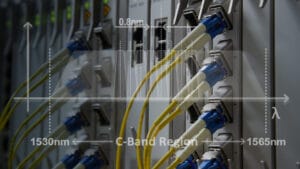
Now that we’ve wrappedup our look back at 2019, it’s time to look ahead to 2020! Here are the topics and trends we expect to dominate the conversation in the year to come.
400G Inches Out of the Data Center
Most of the early 200G and 400G deployments have been in large and hyperscale data centers. However, we believe 2020 will see these speeds start to enter networks in other industries as well. For example, we expect to see more service providers begin sampling, testing, and qualifying, but we don’t expect them to deploy at scale under 2021. As demand broadens for these products, it will also drive down costs for all customers, further accelerating adoption.
As far as form factors go, we expect to see QSFP-DD play a leading role, with OSFP still favored by some organizations for some applications.
5G Marches On
So far, we’ve seen limited 5G deployments with largely proprietary systems, deliveringadequate (if underwhleming) overall performance. We expect to see further progress in the establishment of open 5G standards.
Open Networking in Every Sense
We’ve long touted the cost and flexibility benefits of open networking switches as an alternative to vendor-centric proprietary systems. We expect the fear and uncertainty around open networking to continue to decrease over the next year, as both switches and routers become more “open.”
Additionally, we see networks opening in another sense at the same time. Instead of hardware-centric projects built on application-specific hardware, we expect to see a continued rise in software-defined networking over common, flexible hardware. This will allow network operators to respond more quickly and dynamically to their networks’ needs, and will also pave the way for continued network automation.
More Automation
On that note, we expect to see much more network automation next year, as indicated by our conversationsat MEF19 this year. Organizations will use network automation to reduce manual operations, which will in turn decrease the likelihood of human error and enable them to turn up new services more quickly. Tools by industry leaders Ansible, Chef, and Puppet will lead the way, as traditional software engineering departments will transition to become DevOps teams.
Want to hear more about these stories as they develop? Subscribe to our blog to see more in-depth coverage of everything that matters in the optical networking industry.

